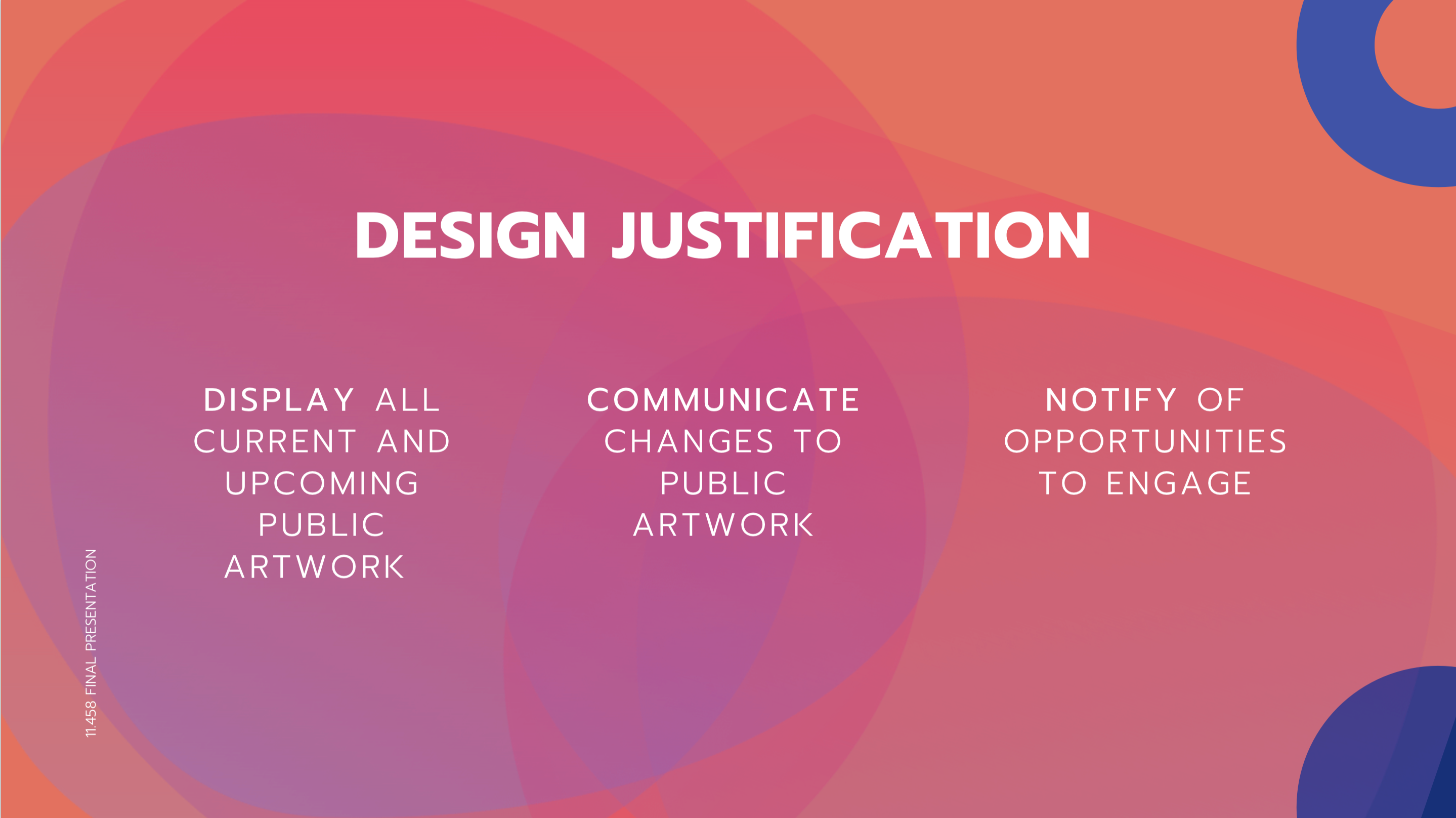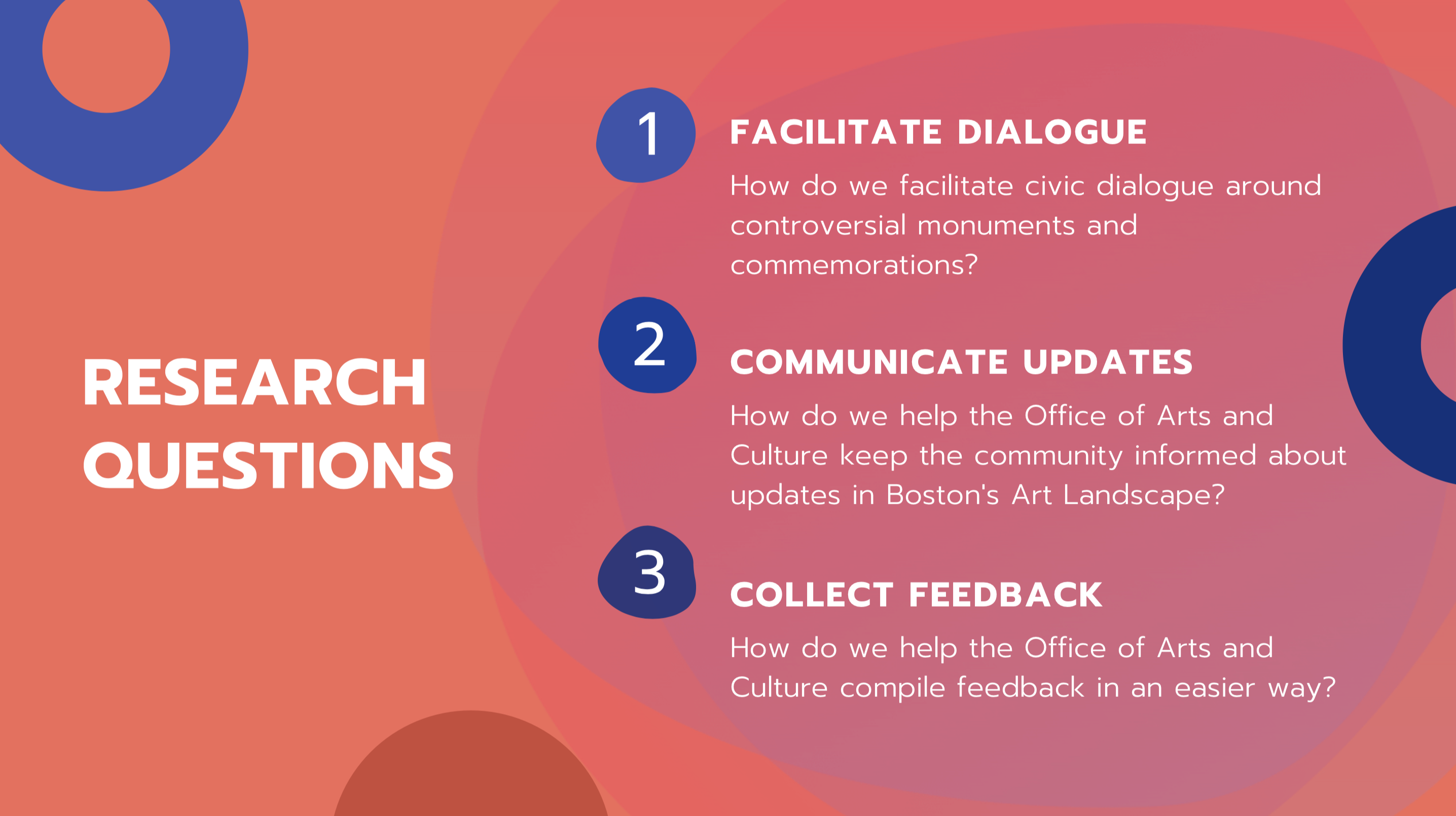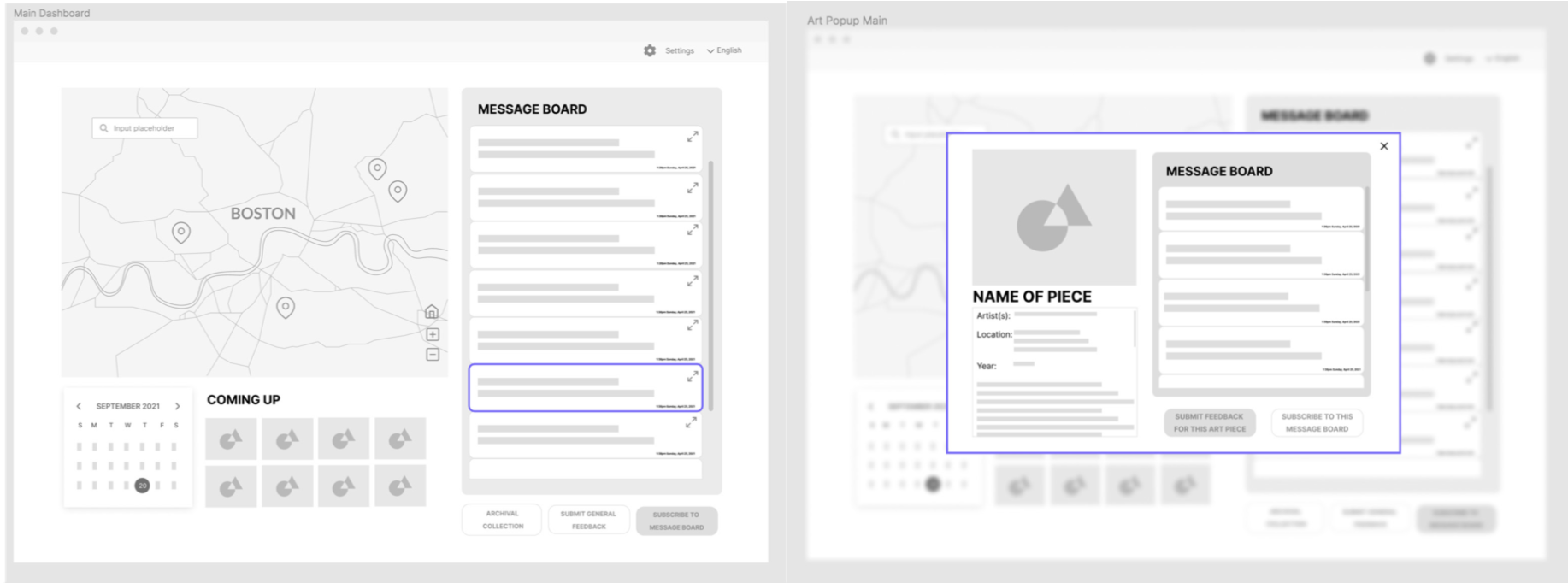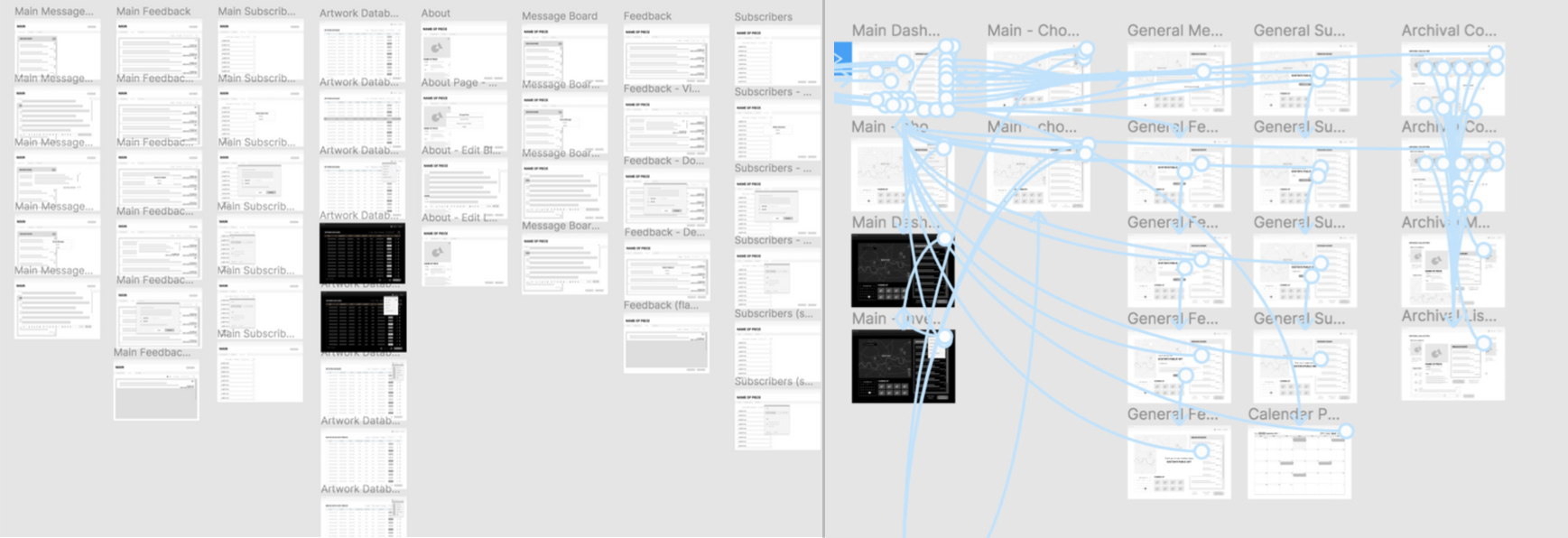GOAL? To analyze feedback on controversial monuments & present back to the Office of the Boston Art Commission. How do we facilitate civic dialogue around controversial monuments and commemorations? How do we help city stakeholders make sense of the feedback and opinions collected to date? How do we make the public art collection dataset accessible, usable and culturally relevant to the public? Which public/s might use it and how?
Client's problem Our partner was the Office of Arts and Culture. They were struggling to communicate changes to the Boston art landscape with residents and wanted to improve feedback collection and processing.
ROLE Primary research (interview), secondary research (trends and emerging technology, residents feedback), insights, and opportunities (identify value experience), wireframe and prototype.
CONCEPT During the Spring 2021, we envisioned public's engagement and interaction with the Public Art Collection Dataset. Especifically, we aimed to achieved how to make the public art collection dataset accessible, usable and culturally relevant to the residents of Boston.
CHALLENGES Challenges: Bring together our partner's interests with our time even meet face to face, to work collaboratively through different platforms online on future-based scenarios, with a focus on solutions reimagining possible adaptations of emerging technologies trends.
Define and understand
In our first meeting with the Office of Arts and Culture we split our umbrella goal into four sub-tasks: process feedback, collect feedback, facilitate dialogue, and communicate updates. After the meeting, we understood that they had most struggled with the feedback and communication processes. Further, as outlined above, we already knew that these were issues that Boston’s communities have been experiencing as well. Thus, we decided to focus on creating an embeddable and shareable dashboard that would display updates about changes and additions to public art and monuments.
In our second and third meetings, we better pinpointed the needs of the city and we learned about the e-museum, which will be a website in which city residents will be able to view and learn about all of Boston’s public art. Although the e-museum would cover the map and location aspects of our idea, we still felt that the communication aspect was lacking. Although we could not directly embed the message board with the e-museum due to the system’s limited flexibility, we were set on integrating the two in some way.
In addition to our main partner, we also met with staff from the Office of Equity who reminded us that accessibility is fundamental, especially because our project is about creating dialogue. Therefore, we designed all our prototypes to include both language and visual settings for non-English speaking or differently-abled users.
After the meetings, we brainstormed 4 concrete ideas for the project: process feedback, collect feedback, facilitate dialogue and communicate updates. Upon assessing limitations, impact and feasibility we concluded that option 4 was the best one for us. Option 1 is a bit limited in scope and would not provide the city with any long lasting tools, option 2 is too broad and complex to complete in the time we have, option 3 is out of our skillset since we both do not have much experience in policy writing or community engagement. Option 4 can work with our timeline, skillset, and hopefully help the city navigate a flexible public art landscape.

On the right path
Two cases guided and inspired our project proposal to help the Office of Arts and Culture to bridge the existing communication gap between the city government and the community: The demolition of the Roxbury Love mural and the Emancipation Group. The "Emancipation Group" statue stood in Park Square since 1879. It was meant to celebrate the emancipation of slaves. However, since its installation the statue has been criticized. Some perceive it as subjecting oneself to Lincoln or a display of white dominance (Whiting Nolen, 1924). In 2020 local artist and activist Tory Bullock started a petition to remove it. Bullock’s message was simple: it is hurtful to look at the statue.
A few miles away, in Roxbury, community members were caught off guard when a neighborhood landmark was demolished. The Roxbury Love mural was a statement of pride by and for Roxbury’s Black community. Neither the Office of Arts & Culture nor the Boston Art Commission announced the mural's removal. This lack of communication and acknowledgment was unacceptable for the community members and they turned to social media as a tool to document and discuss their pain and anger.

Our persona
For who are we designing? There are an infinite number of paths to follow and profiles we could think of, ranging from the less aware of the public space to people advocating for change in it, and these were our extremes. One thing that I learned throughout the process is that in order to create a solution for a problem, we must first understand: who is the user? And what is his/her problem? However, I also learned that designing personas can be quite challenging since their descriptions need to produce some insights and design solutions. Then, we tried to describe them as deeply and extensively as possible. We gathered all our findings into personas and chose one for prototyping our idea. We define her demographics, values, emotions, and pain points and desgined the user journey in our project.

Iterating the project
The iterative design process and back-and-forth with the Office of Arts and Culture was a huge growth opportunity for us. We learned that by focusing on the design process instead of the end product, we could clearly identify and creatively solve the real-world problem. This is what eventually led us to our final recommendation, explained below.



